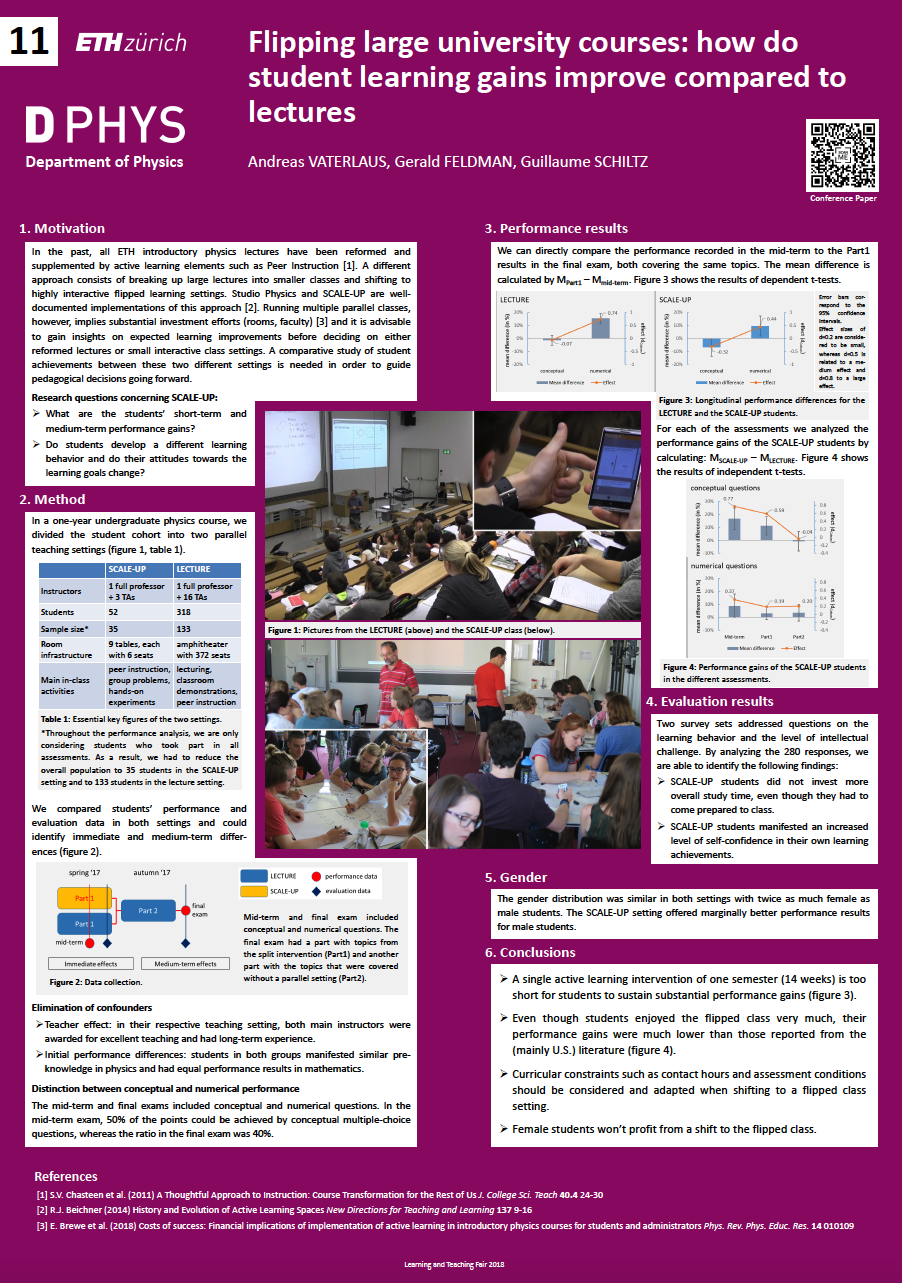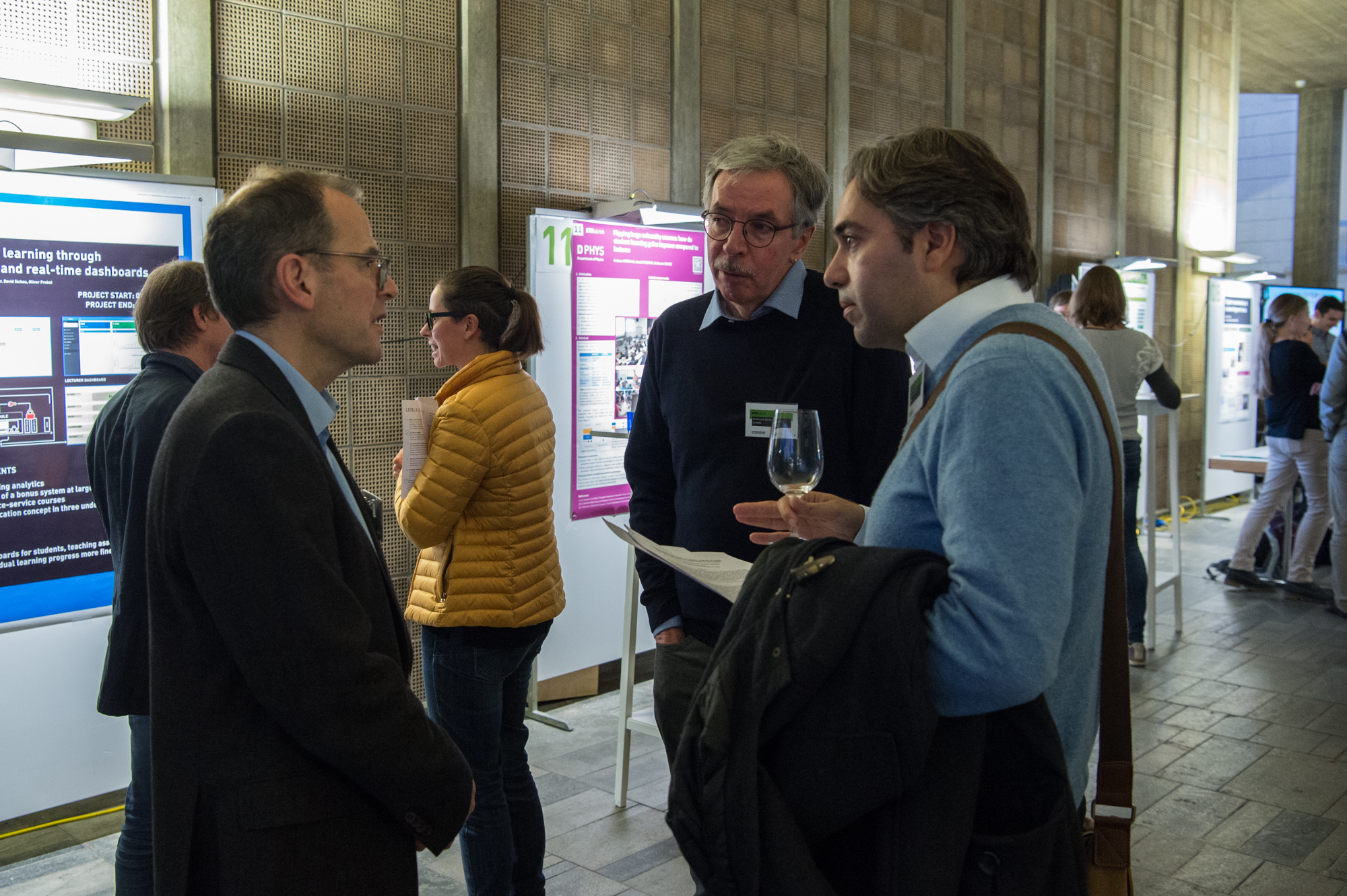Flipping large university courses: How do student learning gains improve compared to lectures?
Booth #11

We have split a student cohort into two parallel settings, a flipped learning group and a lecture group. Comparing the performance results of both groups we can draw conclusions on immediate and medium-term learning effects.
Authors
Prof. Dr Andreas Vaterlaus, D-PHYS, Laboratory for Solid State Physics
Prof. Gerald Feldman, former guest professor at D-PHYS
Dr Guillaume Schiltz, D-PHYS, Educational Developer
Abstract
In the past, all ETH introductory physics lectures have been reformed and supplemented by active learning elements such as Peer Instruction 1. A different approach consists of breaking up large lectures into smaller classes and shifting to highly interactive flipped learning settings. Studio Physics and SCALE-UP are well-documented implementa-tions of this approach 2. Running multiple parallel classes, however, implies substantial investment efforts (rooms, faculty) 3 and it is advisable to gain insights on expected learning improvements before deciding on either reformed lectures or small interactive class settings. A comparative study of student achievements between these two different settings is needed in order to guide pedagogical decisions going forward. For this reason, we have conducted a pilot study within a physics lecture class of 370 students.
